Why You Should Combine Movement with Social-Emotional Learning Activities
Reading, writing, math, science — the list goes on and on. As a teacher, you have so much to cram into the school day and so little time.
The result?
Why You Should Combine Movement with Social-Emotional Learning Activities
Non-academic activities like social-emotional learning (SEL) get relegated to the back burner in favor of more traditional subjects.
Here’s why that’s a bad idea.
We all know social-emotional skills help kids to better understand themselves, build strong relationships, and navigate social situations.
But what you may not know is that a 2011 meta-analysis found that students in schools with social-emotional learning activities showed an 11% gain in academic achievement.
So, yes, SEL does matter — and the good news is you can ramp up social-emotional instruction without disrupting your lesson plans simply by combining it with movement.
Here’s how.
What Is Social-Emotional Learning?
The Collaborative for Academic, Social, and Emotional Learning (CASEL) defines SEL as the process in which children develop emotional intelligence and learn to build healthy relationships, set and pursue goals, and make responsible decisions.
Under this framework, SEL has five core competencies:
- Self-awareness: Recognizing one’s strengths, weaknesses, emotions, and thoughts. Understanding how they affect one’s actions.
- Self-management: Regulation of thoughts, emotions, and behavior. Setting actionable goals, controlling impulses, and managing stress.
- Social awareness: Feeling and showing empathy. Finding support through interpersonal connections.
- Relationship skills: Building and maintaining positive relationships through communication and cooperation.
- Responsible decision-making: Evaluating the consequences of decisions and making ethical choices.
How Movement Facilitates Social-Emotional Learning
All movement involves emotion. The more intense or difficult the action pattern, the more emotionally invested we are. (Try hitting the treadmill for 30 minutes without feeling something!).
Think about it: Physical activity and emotions are so closely related that we literally use the word “moving” to refer to anything that produces strong feelings.
This makes movement an excellent vehicle for teaching social-emotional skills in a natural and embodied way.
5 Examples of Social-Emotional Learning Activities That Will Get Your Kiddos Moving
Below are some of our favorite activities to get children of all ages to move and develop essential social-emotional skills. These are hard enough to challenge students but still feel like fun rather than a boring PE class.
For best results, have activity options or modifications for kids to choose from. Providing opportunities for students to weigh in on the curriculum is especially helpful in increasing participation by middle and high schoolers.
1. Recess
SEL Skills: All
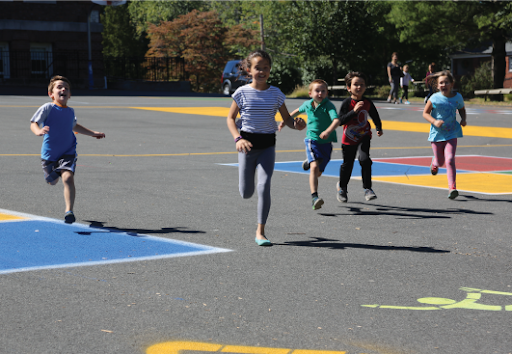
Yes, you read that right! Recess is easily one of the most effective mediums for kids to practice SEL skills they learn in school and at home.
According to the CDC, offering physical activity programs before and after school and making physical activity part of classroom time can increase opportunities for social interaction and enjoyment of learning alongside peers.
With this in mind, consider increasing recess or having more frequent breaks if possible and let the kiddos run riot!
2. Active Icebreakers
SEL Skills: Self-awareness, relationship skills
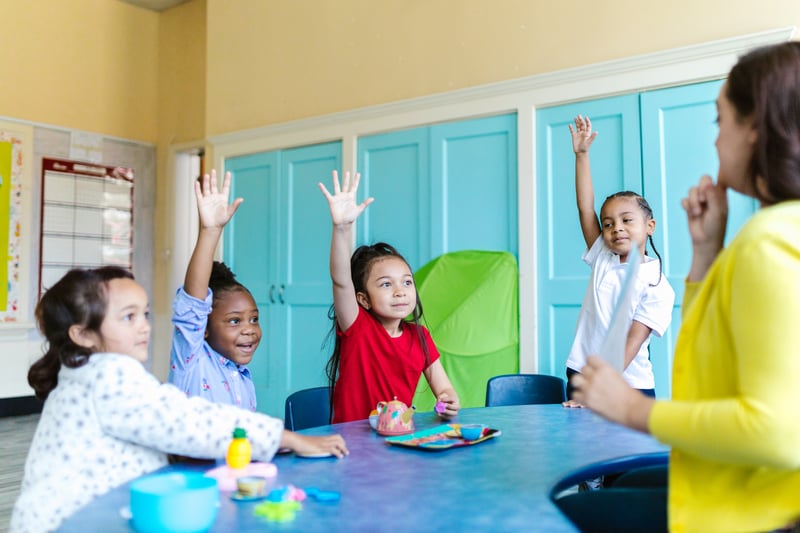 Icebreakers allow students to talk about themselves, reflect on their emotions and experiences, and connect with each other in a judgment-free environment. And the best part is that icebreakers can be customized almost infinitely to fit your classroom needs.
Icebreakers allow students to talk about themselves, reflect on their emotions and experiences, and connect with each other in a judgment-free environment. And the best part is that icebreakers can be customized almost infinitely to fit your classroom needs.
Icebreaker morning meetings are our personal favorite that makes for a fantastic start to the day. Everyone is free to participate or just listen to others. You can keep the conversation light, start a deeper discussion, or encourage students to set personal and collective goals for the day or week.
To throw movement into the mix, write questions or prompts on a large beach ball. Have the kids stand in a circle and play catch. Whoever catches the ball answers the prompt their hand rests on.
3. Mindful Movements & Positive Affirmations
SEL Skills: Self-awareness, self-management
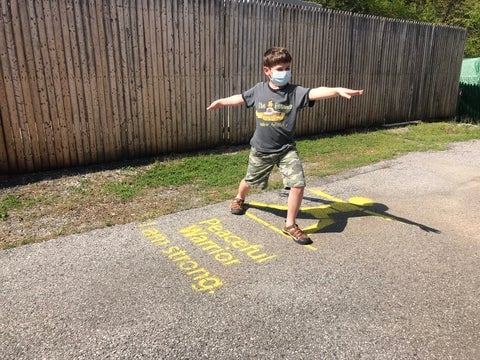 Mindful movements like in yoga pack a punch — from improving balance, coordination, and flexibility to encouraging mindfulness and self-control.
Mindful movements like in yoga pack a punch — from improving balance, coordination, and flexibility to encouraging mindfulness and self-control.
And no, kids don’t need to do a full yoga flow to enjoy these benefits.
You can place our Tree Pose, Star Pose, and Downward Dog yoga stickers at strategic locations around the school building, such as at the end of a sensory pathway or in your classroom’s calm down corner.
This will encourage students to do some impromptu stretches and regulate their mood with positive self-talk on their way to class or during recess.
4. Positive Snowballs
SEL Skills: Social awareness, relationship skills
Your kiddos will love this one. Here’s how it goes.
- Step one: Every student writes a few words of encouragement or an uplifting quote on a white piece of paper.
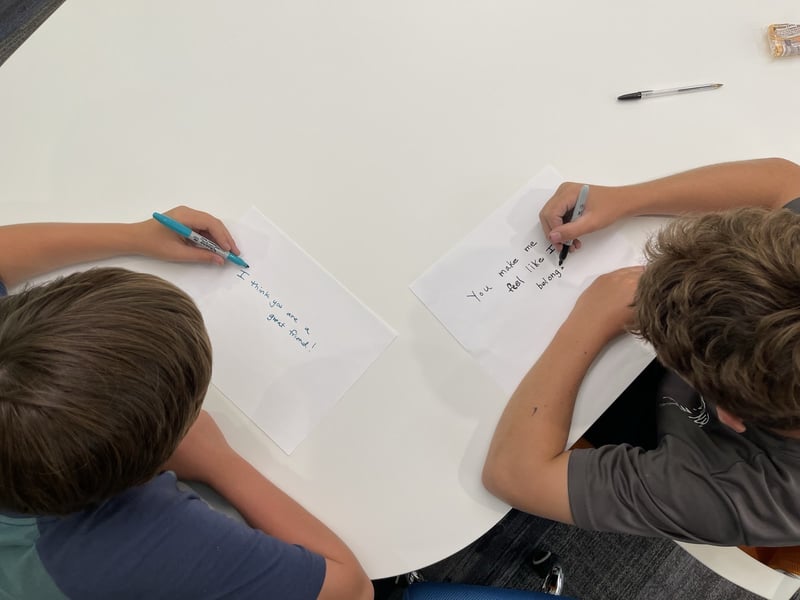
- Step two: Everyone crumples their sheet of paper into a... positive snowball!
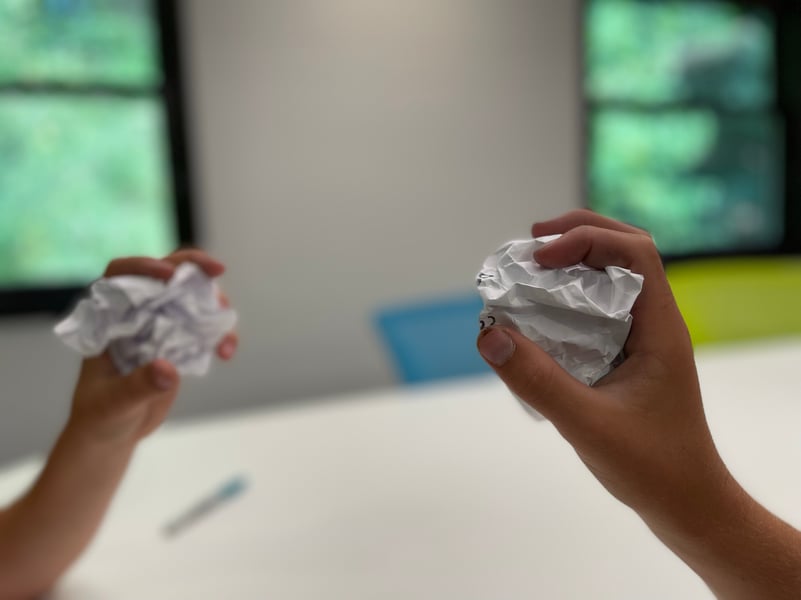
- Step three: Sit back and watch the snowballs dart across the room. Now, not too hard!!
- Step four: After a few minutes of tossing, have each kid pick up the nearest snowball.
- Step five: Everyone sits in a circle and reads the message on their snowball out loud.
- Step six: Pin the sheets on the classroom bulletin board for kids to read when they need a pick-me-up.
5. The Quiet Copy Cat
SEL Skills: Relationship skills, responsible decision-making
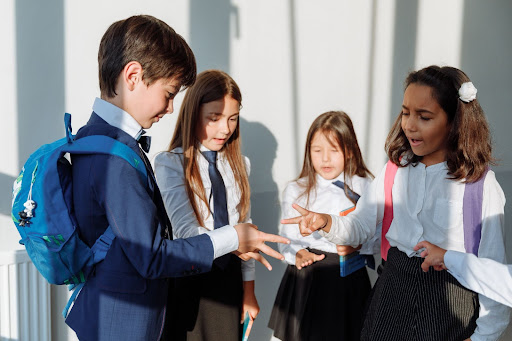
Could use some quiet time? This energy-burning yet silent game is the way to go! It’s also great for practicing non-verbal communication and basic locomotor skills.
Each student picks a partner and the two stand face to face. A round of rock-paper-scissors determines who goes first.
The winner starts by showing a movement pattern ⏤ think marching, jumping up and down, toe touching, ballet twirls, baby dances. The sillier the sequence, the better. Their partner must then repeat it without invading the other’s personal space and in total silence. Only eye contact is allowed.
Partners take turns showing and copying each other’s movements until someone says something or laughs out loud. The couple that makes it the longest without making a sound wins.
Hint: Use a colorful prop like our Copy Cat Roll-Out Activity to make the game more engaging.
Want More Ideas for Social-Emotional Learning Activities?
There are many other ways to elevate your emotional learning curriculum.
Download our free Mega Guide to discover hundreds of active learning techniques and strategies for improving kids’ SEL skills. You’ll also get 10% OFF our Super Stickers®️, Sensory Pathways, Stencils, and Roll-Out Activities®️!



Leave a comment